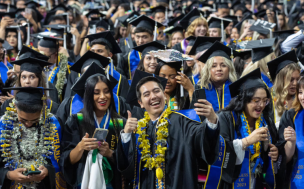Nearly a quarter of 2016 MBA hopefuls changed their list of target schools based on cost and financial aid, according to a survey of 3,500 published Wednesday by the Association of Independent Graduate Admissions Consultants. And more than 40% said their initial choice was influenced by affordability.
“It is a big sacrifice — two years of your life, and a lot of money you’re paying and not making,” said Lilly Zhong, an MBA candidate at Wharton School at University of Pennsylvania, who comes from McKinsey & Company, the consultancy.
MBA degrees can cost well over a hundred thousand dollars at top US business schools.
Concerns over financing an MBA have risen significantly since the financial crisis. In 2009, cost and financial aid were ranked as the least important factors for MBA applicants, according to AIGAC data.
“The MBA is a big investment. Fifty percent of our class have some kind of financial support,” said Paola Eicher, MBA recruitment manager at Swiss business school IMD.
Banks have cut back on lending, starving business school students of a vital credit line. But this has opened the way for a new set of challengers to enter the student loans market.
Fintech players that offer crowdfunding to MBA students have become more popular. Prodigy Finance works with programs including at Yale, IE Business School and London Business School. Other fintech start-ups, such as CommonBond — founded by Wharton MBAs — and SoFi — set-up by Stanford GSB grads — have also made inroads.
“Their innovative model[s] offer loans to international postgraduate students at leading business schools,” said Virginie Fougea, INSEAD’s associate director of admissions.
Meanwhile, scholarships have become an important recruitment tool in a saturated MBA market. At MIT Sloan, a quarter of MBAs receive financial aid. At Yale, a third do. At Stanford GSB, the figure is as high as 65%.
“It’s an important criterion. But students understand an MBA is a long-term investment,” said Conrad Chua, head of admissions at Cambridge Judge Business School. Forty percent of CJBS MBAs receive financial aid.
The time and monetary commitment of attending a two year MBA — common in the US — is increasingly being questioned by b-school students. This has made Europe’s favoured one-year model more attractive.
Interest in full-time, two-year MBA programs decreased from 89% in 2015 to 69% in 2016, according to AIGAC. Meanwhile, interest in full-time, less than two-year programs increased from 33% in 2015 to 40% in 2016.
And the 10-month MBA at INSEAD, founded in France, was ranked by the Financial Times as the best program in the world this year.
“The quality of one-year programs has been proven,” said Michelle Sisto, director of the Global MBA at EDHEC Business School in France.
RECAPTHA :
35
21
ac
85








